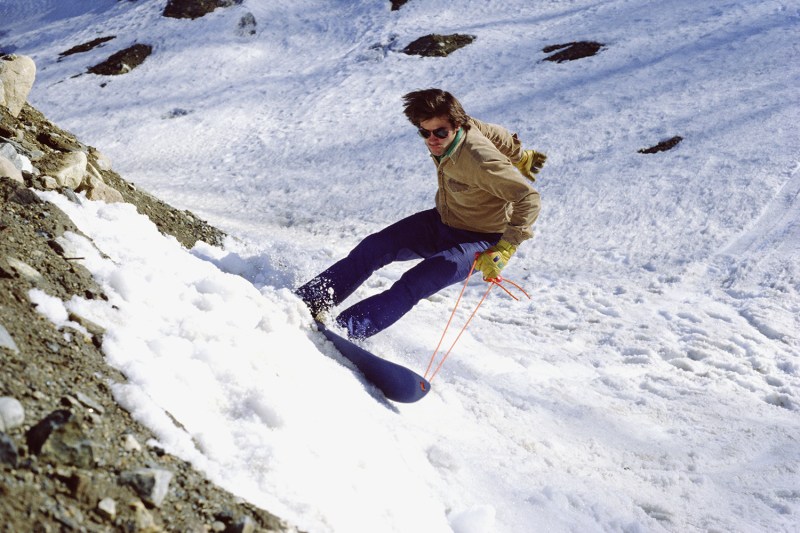
‘We just want to say that we don’t want them at all.’
Ever felt like you’re not welcome on the mountain? Perhaps not, but our generation of snowboarders had the way paved by some fiercely defiant riders who were not about to bow down to pressure. The issue between skiers and snowboarders has settled a little since the ’60s when snowboards started hitting the mountain. Sure, I get some lighthearted ribbing and the odd comment as a snowboarder, but just check out what these trailblazers had to contend with in this video.
This video is full of pretty damning comments, right? Unfortunately, not in the way these ski patrollers hoped. Much like a modern-day politician, they’re spouting a load of nonsense in the hope that it washes over the fact that they don’t want to say what the real issue is. We’ll get to the root of the problem in a moment — I’m sure you’ve worked out what it is — but first, here are my three favorite bits of nonsense from this video:
- “If one of these hit a person, they’d break their leg.” — Right, because no one on the mountain has ever had their leg broken by another skier, right?
- “The major problem with snowboards is that they run into people. They can’t see behind them.” — Snowboarders have crashed into me. Skiers have crashed into me. If you don’t look around you, you don’t know what’s there. Being alert to your surroundings and aware of other hill users is a fundamental skiing rule that I’ve seen flouted on both sides.
- “They don’t see our point, they just see their own point, and it’s sort of a tunnel vision.
Do you see any compromise in the future at all?
No” — This is by far my favorite, and it’s not even about skiing and snowboarding. I just enjoy the complete lack of self-awareness that went into this statement.
So what’s the root of the problem? Change. Even worse, change from a younger generation. This wasn’t how things were done back then. Skiing was an elitist sport. It still is, and I’m afraid that so is snowboarding nowadays — when your ski gear runs to thousands of dollars, this is a tough point to argue against. But at the time, the idea of these young ‘hooligans’ coming in and turning the hillside into a playground didn’t sit right with the Alpine-style skiing traditions at the time.
Snowboarding, snurfing, ski-skating. Whatever they wanted to call it, it was all about freedom, rebellion, and fun. It was about shredding the mountain even though the establishment didn’t want them. Heck, to some extent, it was about shredding the mountain precisely because the establishment didn’t want them. They turned up on their homemade rigs in their boots and jeans and hiked past lift queues just to ride. It’s a commitment to a cause that did as much to turn younger riders to snowboarding as it did to deter them from the mountain.
“One season is one too many for many ski resorts.” Well, apparently not, thanks to these young rippers who fought against this sort of anti-snowboarding rhetoric. Skiers and snowboarders might not see eye-to-eye on everything, but we can all rally behind a love for the mountain. Oh, and the fact that those ski bikes need to go! (Just kidding, kind of.)

The ski-only holdouts
So, since that video was shot, things have changed for snowboarders, and they are now welcomed everywhere, right?
No, there are still at least three resorts in the United States that do not allow snowboarding in any capacity.
Vermont’s Mad River Glen actually allowed snowboarding for a time beginning in 1986, but due to safety concerns over snowboarders having difficulties getting off Mad River’s main single-chair lift, Mad River decided to ban snowboarding in 1991, and there is no indication that the resort, which is owned by a co-op that would have to vote to reverse the ban, would consider lifting the ban on snowboarding.
The other two resorts to ban snowboarding are both in Utah: Deer Valley and Alta Ski Area. According to Deer Valley’s website, “Deer Valley is a ski-only resort. Guests on alpine, telemark, or mono ski equipment with feet placed side by side and facing forward are allowed. Snowboards and carving boards are restricted from use.”
The other Utah resort to ban snowboarding is the Alta Ski Area, which uses the slogan “Alta Ski Area is for skiers.” Unlike Mad River Glen, Deer Vally and Alta Ski Area have never allowed snowboarding.



